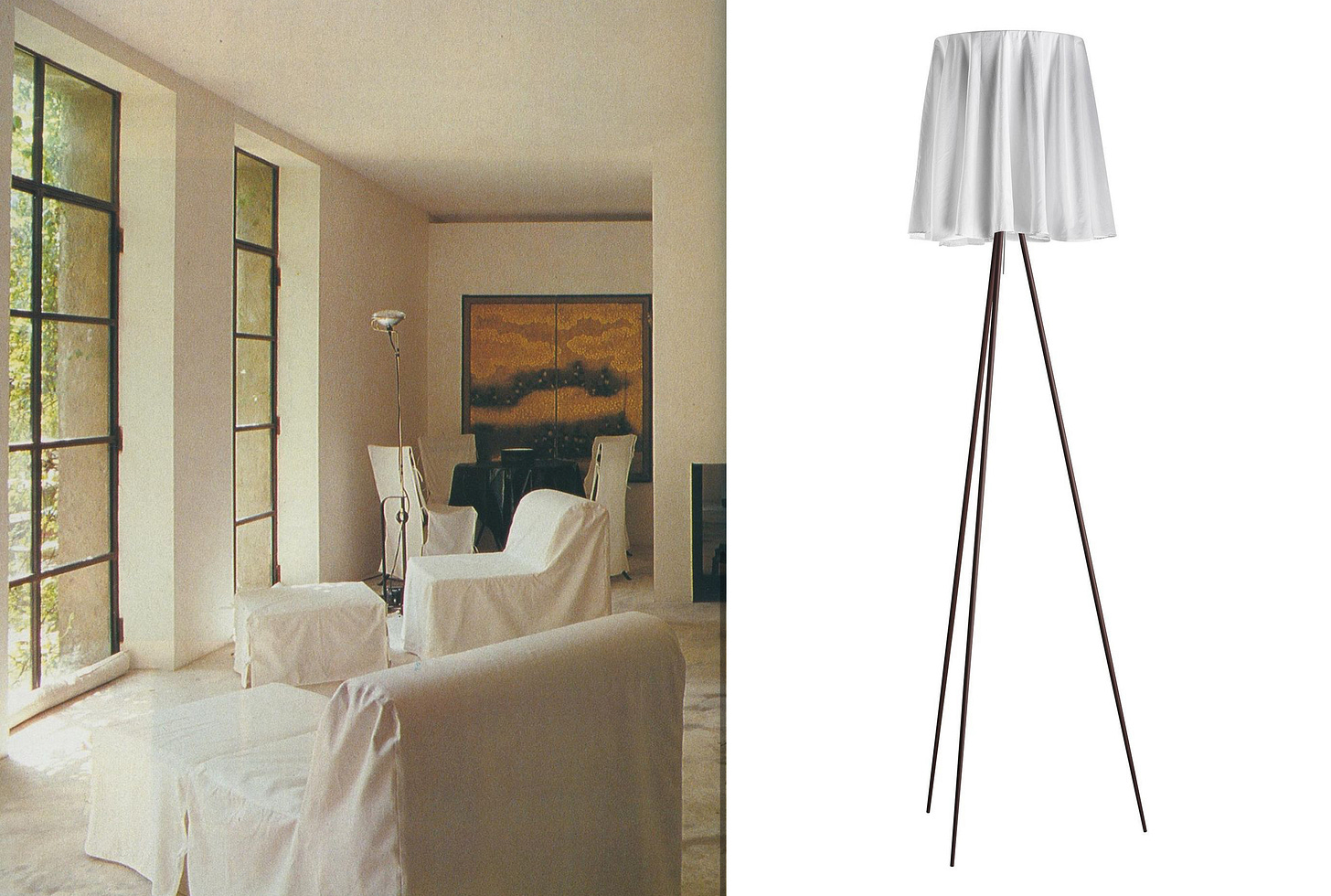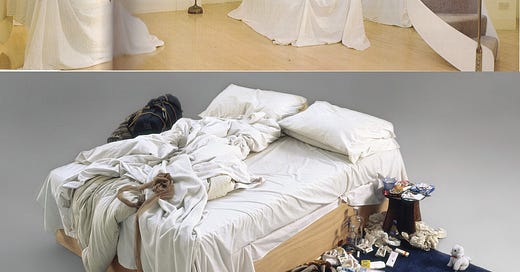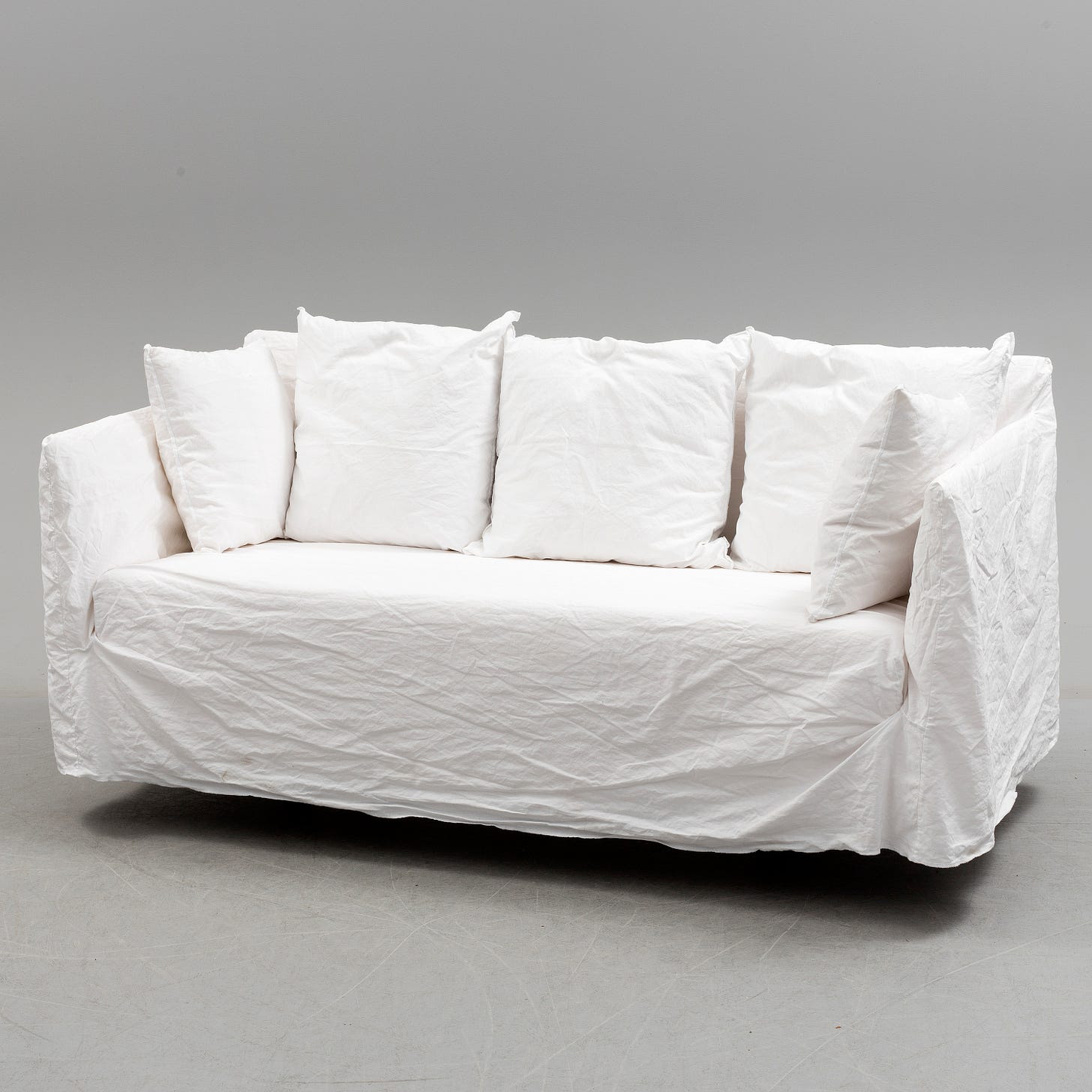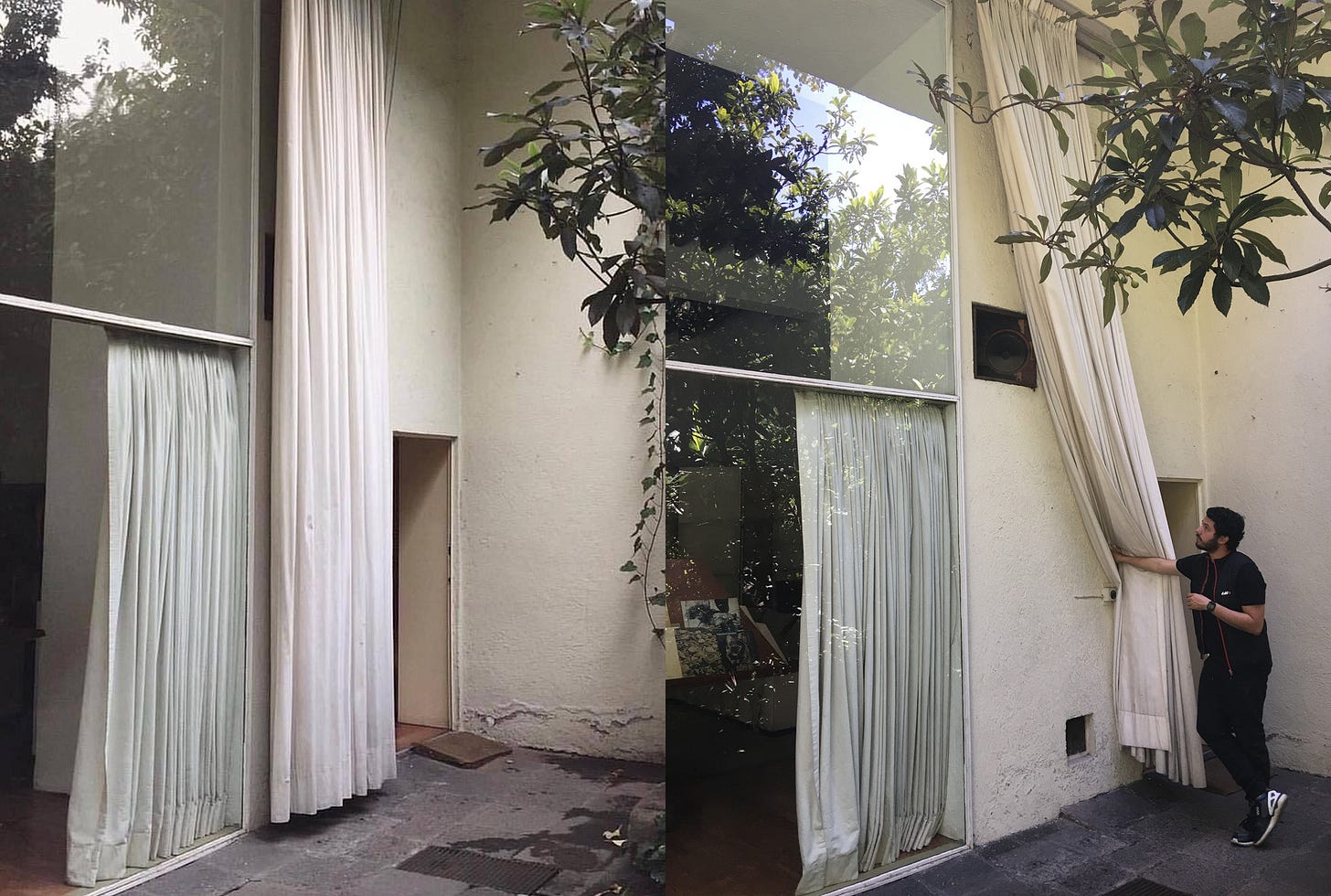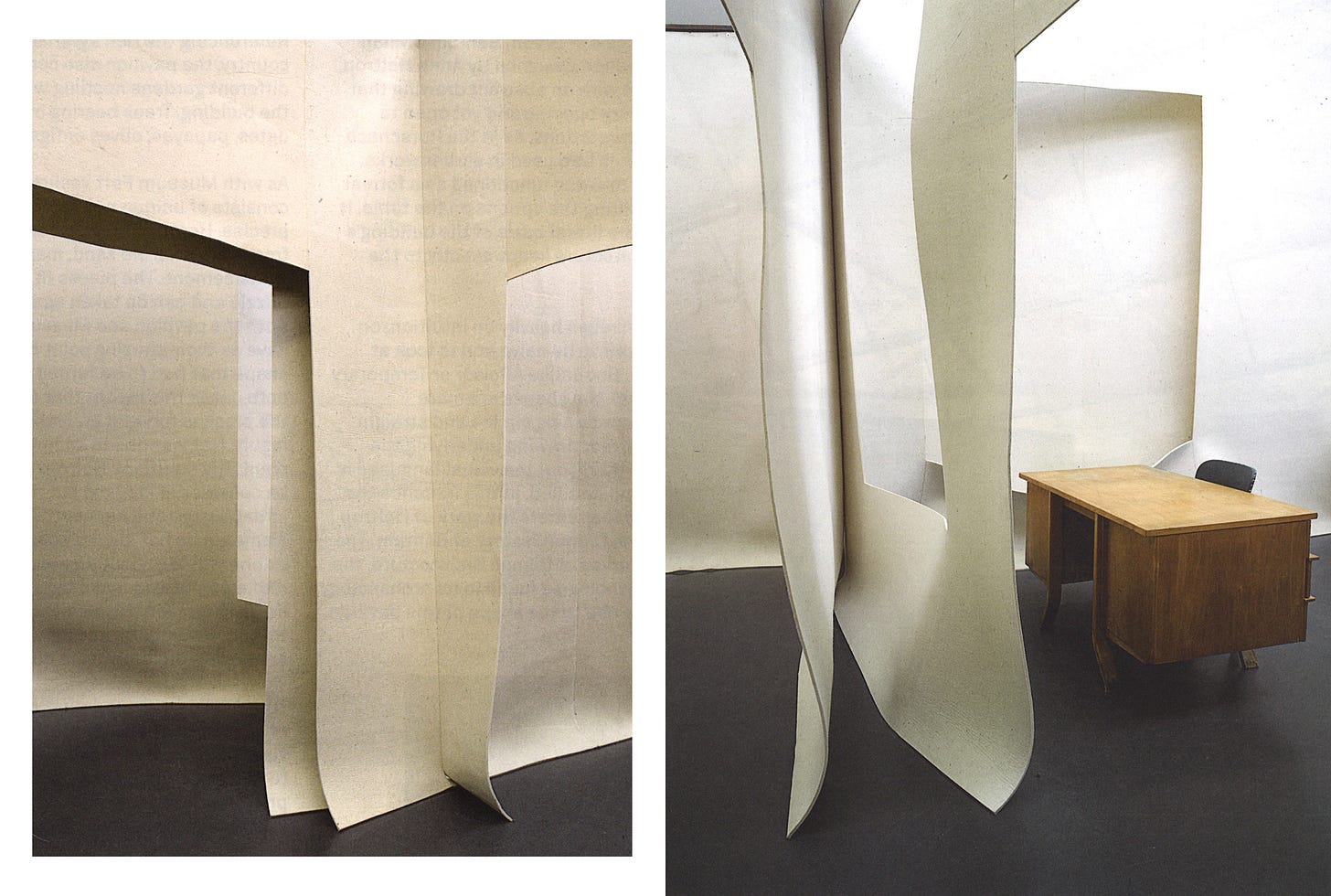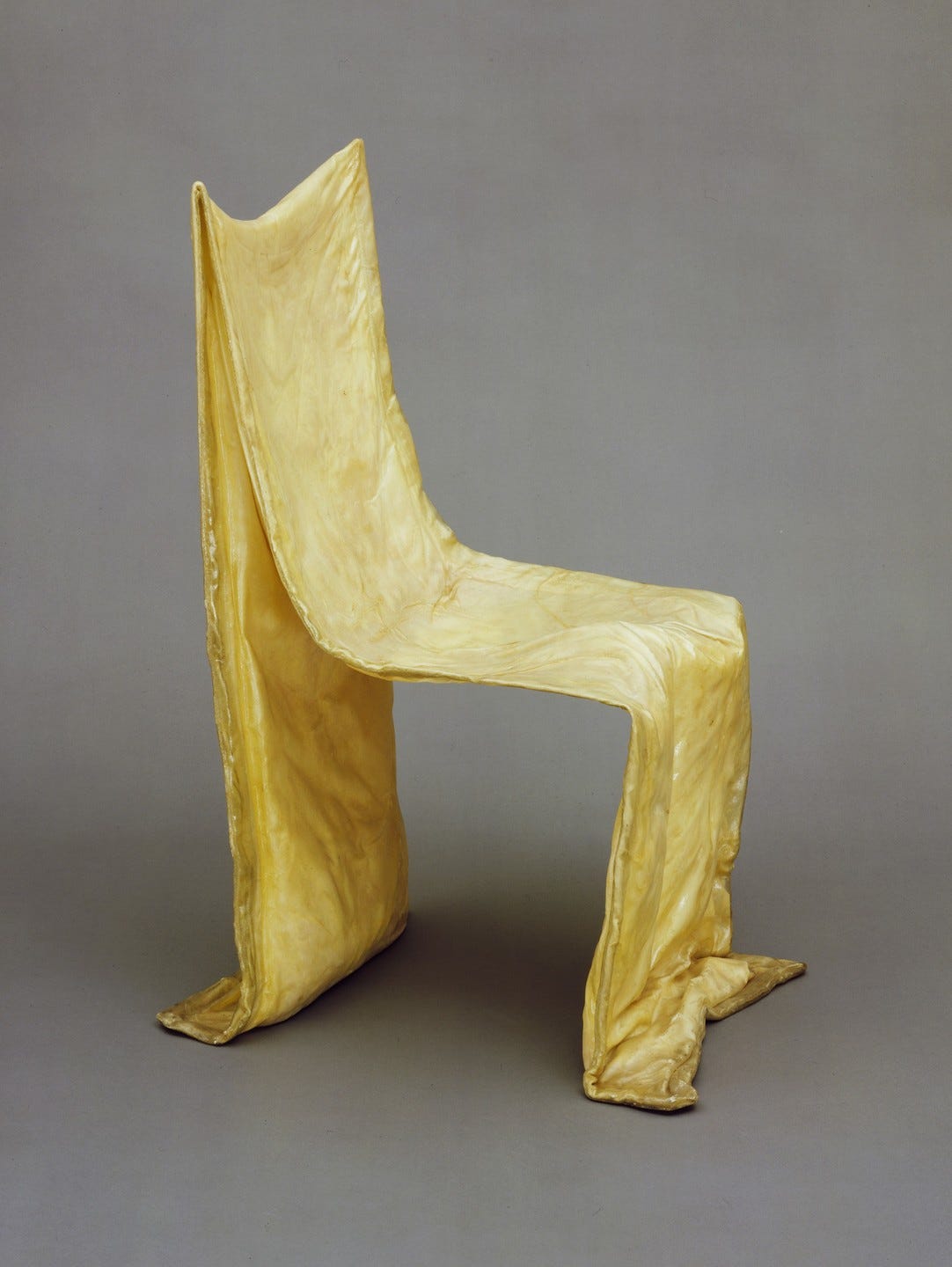A love letter to the drape.
I read somewhere that the term ‘fold’ was appropriated by the French philosopher, Gilles Deleuze, theorizing that the world is interpreted as a body of infinite folds and surfaces that twist and weave through compressed time and space. Fabric seems to me to be very emblematic of the complexities of space: the weave, the fluidity, and the facility.
Yet there seems to be a threshold between architecture (and for the sake of this soliloquy, architecture from an external point) and interior spaces. Perhaps because shifts in architecture occur at a slower pace because of its highly structured nature, whereas the interior space, and its own construct, seems more ephemeral, transient. Perhaps. Perhaps also the interior space and the practice of designing the interior space has been mostly associated with the feminine, but architecture is historically considered to be a man’s game.
Cloth is feminine though. Cloth is liquid, it is forgiving, it is nourishing, undulating and enveloping. It is intricate and beautiful. Its construct is like a community: all interconnected.
I speak only from experience and not with judgement, but it seems to me that the innocuous flat sheet says a lot more than first thought, it seems that women and persons who identify as female are more likely to use and sleep with a top sheet, versus the male persuasion: who inherently seem to prefer to sleep without one. Do women respond to the tactility and sensitivity of the cloth over their body? On August 6 2020, Australian writer Benjamin Law tweeted: ‘The way white people layer their bedsheets is as complex and intricate as a human vulva….’
Maybe so.
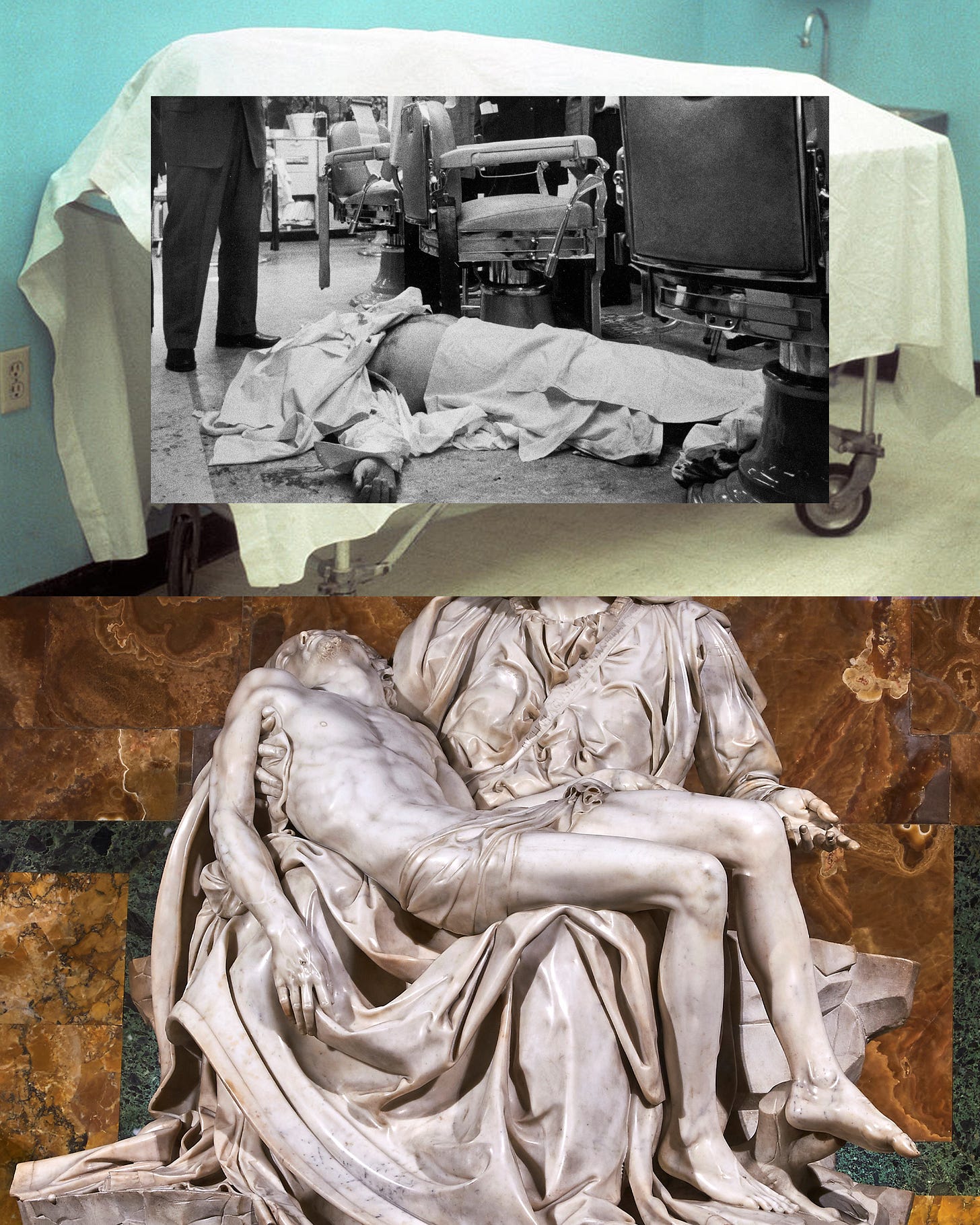
That flat sheet placed over our bodies in our slumber morbidy brings forth an image in my mind of a deceased body with a piece of white cloth placed over it for respect and discretion. Somewhat loosely but similarly, my mind thinks of the cloth placed over the piece of furniture, a sofa perhaps. Is that simply a tool of preservation? Is it to show discretion? Is it an aesthetic choice? A certain laissez-faire approach to interiors and décor was prominent at the end of the 20th century, approaching the millennium, whereby technology was developing at such a high velocity that its own inertia was to pare things back and embrace an elemental minimalism in design.
